Araneta Family History & Genealogy
Araneta Last Name History & Origin
AddSummary
The Araneta family has its origins in the area of Aragon, Spain. This surname is Basque and means "one who dwells in a valley." If you have more information about the Araneta family, please add it to this page.
History
The Araneta family has its origins in the area of Aragon, Spain. This surname is Basque and means "one who dwells in a valley." If you have more information about the Araneta family, please add it to this page.
Name Origin
ARANETA FAMILY NAME HISTORY & ORIGIN
The Araneta family dates back from the early times when aristocracy was still prevalent. The family traces their ancestral roots back to ancient times in Vasconia, (Basque) and from there, are scattered all over the world.
According to the scholar, "Baron de Cobos" of Belchite, Aragon, "in its surnames dictionary" one branch of this family established their household in Gipuzkoa, one of the three provinces of Euskal Herria, the name given to the home of the Basque people, which today form the Communidad Autónoma del "Pais Vasco" or "Euskadi" in Basque, and the Chartered Community of Navarra (Nafarroa).
The family dwelled mostly near the mountains, which are surrounded by valleys, hence the name Araneta, the etymology of which is derived from the Basque term "aran" meaning valley, and the locative suffix "eta", which denotes a "place of". Thus, the initial bearer of the surname Araneta would have been someone who dwelled in a valley.
From the diverse unity which characterizes Spain, comes the distinguished Araneta family surname. Historians have studied the available records and it revealed that the original family ancestral seat originated first in Vasconia, where it had its primitive origin. The Vascones were, most likely, the ancestors of the present-day Basques to whom they left their name.
One of the earliest records bearing the name Araneta is that of Martin de Araneta, who came from an aristocratic family of Basque origin. His name was recorded in a Castilian document dated 1227.
Martin de Araneta was a Knight during the era of the Reconquest. He served and escorted Ferdinand III, King of Castile and Leon, in the conquest of Cordova, Murcia, Jaen, and Seville, from the Moors in 1217. He was granted innumerable amounts of lands when Ferdinand divided the conquered territories between his knights, the Church, and the Nobility, whom he enfeoffed with great latifundias.
According to Alberto and Arturo Garcia Garaffa, Basque writers and historians, the Aranetas had ancestral houses in the valleys of Gainza and Andoain in Gipuzkoa. A notable member of this household, Juan Francisco de Araneta, was ennobled in Gainza, circa 1683.
The Spanish Crown, in granting the family a decree of the coat-of-arms, recognized the nobility of the Araneta family. It is found in the compilation of the land of " Basque and Navarres" (Vol. 10 page 91 Enciclopedia Heraldica y Genealógica Hispano – Americano by Alberto and Arturo Garcia Carraffa).
References:
National Historical Archive & Research Center.
Enciclopedia Heráldica y Genealógica Hispano-Americano (por Alberto y Arturo Garcia Garaffa).
Spellings & Pronunciations
We don't have any alternate spellings or pronunciation information on the Araneta name. Have information to share?
Nationality & Ethnicity
The Araneta family country of origin is Spain. Specifically the area of Gipuzkoa a Basque region of northern Spain.
The Araneta family is of Basque nationality/ethnicity.
Famous People named Araneta
Famous Araneta family members include:
Martin de Araneta: A Knight durng the era of the Renaissance.
Juan Francisco de Araneta - was ennoble in Gainza circa 1600
Early Aranetas
These are the earliest records we have of the Araneta family.



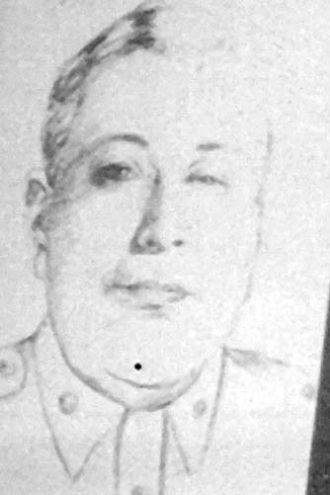
Araneta Family Members
Araneta Family Photos
Discover Araneta family photos shared by the community. These photos contain people and places related to the Araneta last name.

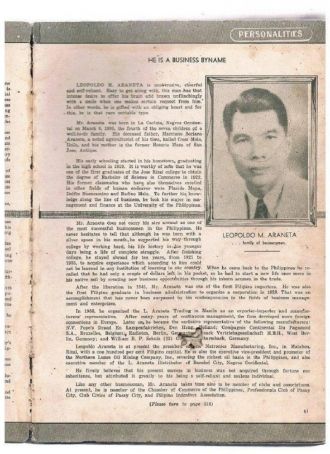
People in photo include: Leopoldo M. Araneta

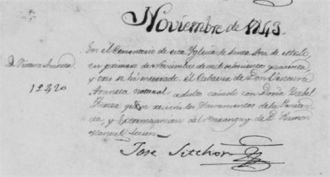


People in photo include: Mathias Araneta


People in photo include: Felix Araneta and Gabriel Araneta


Araneta Family Tree
Discover the most common names, oldest records and life expectancy of people with the last name Araneta.
Most Common First Names
- Jose 8.1%
- Julian 5.4%
- Marciano 5.4%
- Royanthony 2.7%
- Aurelia 2.7%
- Teresita 2.7%
- Mercedes 2.7%
- Lillian 2.7%
- Constantino 2.7%
- Ligaya 2.7%
Updated Araneta Biographies




Popular Araneta Biographies


Araneta Death Records & Life Expectancy
The average age of a Araneta family member is 69.0 years old according to our database of 34 people with the last name Araneta that have a birth and death date listed.
Life Expectancy
Oldest Aranetas
These are the longest-lived members of the Araneta family on AncientFaces.
Other Araneta Records
Share memories about your Araneta family
Leave comments and ask questions related to the Araneta family.
 RolandOscar Araneta
RolandOscar Araneta  RolandOscar Araneta
RolandOscar Araneta The Araneta family dates back from the early times when aristocracy was still prevalent. The family traces their ancestral roots back to ancient times in Vasconia, (Basque) and from there, are scattered all over the world.
According to the scholar, "Baron de Cobos" of Belchite, Aragon, "in its surnames dictionary" one branch of this family established their household in Gipuzkoa, one of the three provinces of Euskal Herria, the name given to the home of the Basque people, which today form the Communidad Autónoma del "Pais Vasco" or "Euskadi" in Basque, and the Chartered Community of Navarra (Nafarroa).
The family dwelled mostly near the mountains, which are surrounded by valleys, hence the name Araneta, the etymology of which is derived from the Basque term "aran" meaning valley, and the locative suffix "eta", which denotes a "place of". Thus, the initial bearer of the surname Araneta would have been someone who dwelled in a valley.
From the diverse unity which characterizes Spain, comes the distinguished Araneta family surname. Historians have studied the available records and it revealed that the original family ancestral seat first originated in Vasconia, where it had its primitive origin. The Vascones were, most likely, the ancestors of the present-day Basques to whom they left their name.
One of the earliest records bearing the name Araneta is that of Martin de Araneta, who came from an aristocratic family of Basque origin. His name was recorded in a Castilian document dated 1227.
Martin de Araneta was a Knight during the era of the Reconquest. He served and escorted Ferdinand III, King of Castile and Leon, in the conquest of Cordova, Murcia, Jaen, and Seville, from the Moors in 1217. He was granted innumerable amounts of lands when Ferdinand divided the conquered territories between his knights, the Church, and the Nobility, whom he enfeoffed with great latifundias.
According to Alberto and Arturo Garcia Garaffa, Basque writers and historians, the Aranetas had ancestral houses in the valleys of Gainza and Andoain in Gipuzkoa. A notable member of this household, Juan Francisco de Araneta, was ennobled in Gainza, circa 1683.
The Spanish Crown, in granting the family a decree of the coat-of-arms, recognized the nobility of the Araneta family. It is found in the compilation of the land of " Basque and Navarres" (Vol. 10 page 91 Enciclopedia Heraldica y Genealógica Hispano – Americano by Alberto and Arturo Garcia Carraffa).
References:
National Historical Archive & Research Center.
Enciclopedia Heráldica y Genealógica Hispano-Americano (por Alberto y Arturo Garcia Garaffa).
Followers & Sources

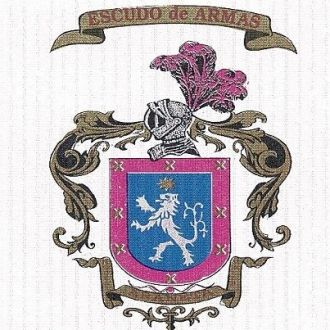
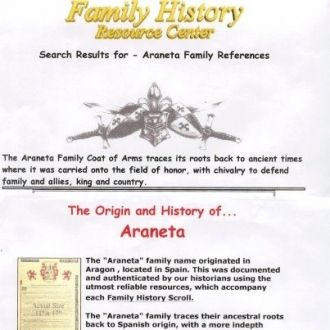



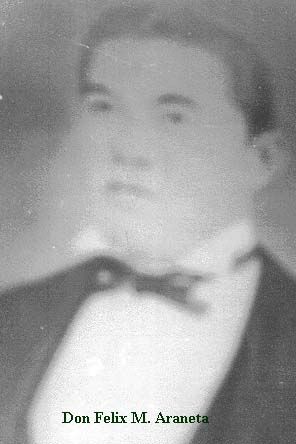
In 1723, during the Galleon Trade, two brothers named Baltazar de Araneta and Don Jose de Araneta arrived in Manila aboard the Spanish Galeón ,"La Sacra Familia". They came from the Basque region of Spain by way of Acapulco, Mexico. This is, however, not conclusive, as some members of the family disputed that the two are not brothers as Don Jose de Araneta might have been born in Gipuzkoa, while Baltazar de Araneta was born in Mexico.
There are many conflicting testimonies about the beginning of the first Philippine Aranetas. Many of these stories were passed down verbally from generation to generation, so it is more likely than not, that these stories have changed along the way. Some has it that Don Jose de Araneta was born in Zamboanga. If he was born in Zamboanga, he therefore can not be the same Don Jose de Araneta who arrived in Manila in 1723. Other stories have it that an Araneta from the Basque region of Spain first settled in Zamboanga, while others say that the first Aranetas in the Philippines began with two brothers from Mexico, who were priests. Until documentations to substantiate these stories are found, the true facts will remain unknown.
From articles written by Santiago Gomez [El Galeón de Manila en el siglo XVIII, Navios de la Carrera de Filipinas] in reference to Baltazar de Araneta and Juan de Araneta. To wit: ''The Galeón Nuestra Senora del Pilar de Zaragosa", under the command of General Baltazar de Araneta and his ship master, Captain Jose Antonio de la Madrid, sailed from Cavite on July 31, 1736, accompanied by the flagship N.S. Cavadonga, and that it arrived in Acapulco, Mexico, four months later. The same ship returned to Manila on August 20, 1739, (on board the ship was the newly appointed governor to the Philippines Gaspar Antonio de la Torre).
Baltazar de Araneta served the Spanish government as Regidor of the Cabildo and Secretary of the Charitable Fraternity of the Misericordia in Manila. He married Manuela de Aguirre. Baltazar de Araneta died in Manila in 1750. One line of the Araneta family descended from him.
Also, there was the Galeón Santisima Trinidad y Nuestra Senora del Buen Fin, familiarly known as El Pederoso (The mighty). The governor, Jose Francisco Ovando y Solis ordered its construction in the yards of Bagatao (island of Luzon), to replace the Nuestra Senora de Cavadonga that was captured by British Admiral George Anson, commander of the frigate HMS Centurion. Built in 1751, it was one of the largest ships in the islands. Its first trip departed in mid 1751 under the command of General D. Francisco Ustariz, and his ship master, Captain Juan de Araneta. Without any setbacks, it returned to the Philippines in the spring of 1752.
A passage quoted from the book (Islas Filipinas: Mindanao Vol.11), by Benito Francia and Julian Gonzales Parrado, translated from the Chabacano dialect by Datu Michael Mastura, established two facts: First, Don Jose de Araneta served the Spanish Politico-Military Government of Mindanao based in Zamboanga City. Second, he served as interpreter between the Spanish colonial government and the Sultan of Maguindanao, along with Placido Alberto de Saavedra. Another passage from the book revealed that in 1746, Don Jose Araneta was executed in Sulugan, Mindanao, nowadays known as Anuling, in Cotabato, Philippines. There are conflicting information drawn from translations of various documents pertaining to him.
Before the turn of the century, two of Don Jose's sons, Mathias Araneta and Vicente Araneta left Zamboanga province for Iloilo. They settled in Parian [Molo]. Don Jose's other son, Benito, followed them afterwards. Years later, Vicente Araneta, with his family, moved and established their residence in the province of Negros Occidental, starting the Negros branch of the family.
The Philippine Aranetas of today are descendants of Don Jose de Araneta and Baltazar de Araneta.
References:
Portal Archivos General de Indies (Por Santiago Gomez).
Islas Filipinas: Mindanao (Por Benito Francia and Julian G. Parredo).
Copyright 1997
Footnote: The Galeón Nuestra Senora de Guia, arrived in Manila from Acapulco, Mexico six years later in August 9, 1729 and not 1723, as circulated from a leaflet during the Araneta grand reunion in Iloilo in 1993. (Source Archivo General de Indies, pp.32-33, Ruta Acapulco - Filipinas). The Galeón La Sacra Familia, arrived in Manila in 1723. (See source Overview of Galleons to / from Philippines, 1565 - 1815).